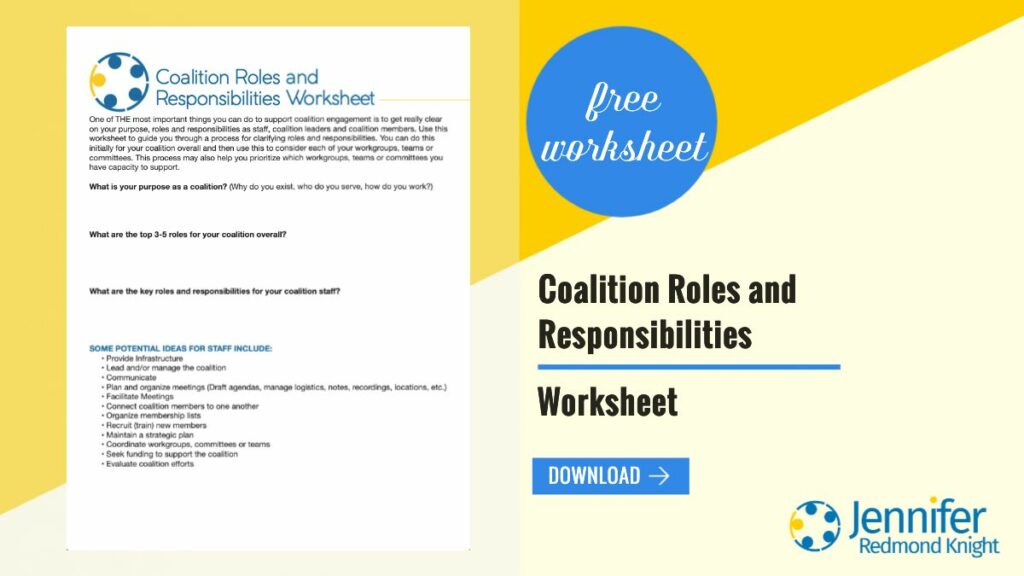Coalitions focus on different topics, causes and are often related to improving a health or social outcome. They focus on achieving results that can only happen when people work together rather than on their own. While this may appear clear, simple and straightforward, the real impact happens when the coalition takes action together. And what does that look like? Join me this week for an overview of seven overarching activities that coalitions do.
Plans.
The first activity a coalition conducts is planning. Coalitions plan their purpose, their focus and often develop strategic plans to guide their work. The planning process happens at the beginning of a coalition as well as once a coalition has finished a project, strategy or accomplished a goal. For some groups, they develop plans based on a timeframe (e.g. five year plan) and then update the plan when the timeframe has ended. Plans may change with new sources of funding, new structures or new staff and leaders. Plans also have varying levels of details. For instance, strategic plans are often overarching plans while action plans include the details of specific strategies, tasks, timelines and people responsible.
Engages.
As part of the planning process, the coalition begins engaging with interested members and identifies potential leaders. This often first occurs through coalition staff but as the coalition grows, the engagement happens in multiple directions. Participants engage with the coalition to develop a plan because they are interested in the topic area. Once the plan is developed, new members engage with the coalition by participating in areas of interest.
Combines.
When coalition members convene around a plan, they have the ability to both combine and share resources to work toward common goals and objectives. This is one of the ways that a coalition is able to do more together than they could on their own. When the goals of the coalition align with goals of member organizations, they are able to share some of their resources to catalyze the common efforts.
Prioritizes.
Although coalitions develop plans, engage with interested members and combine resources, there are never enough resources to do everything that is in a plan. One of the most important and challenging activities a coalition can do is to prioritize what they want to work on together. In order to make the collective impact a coalition desires, prioritizing will help the coalition focus on what is feasible, achievable and most likely to result in positive outcomes.
Implements.
This is often the activity that gets the most attention in coalition work. Although there are several steps needed to get to implementation, the implementation part is when the coalition is focused on specific actions and tasks. Early in my coalition work, one of my coalition members kept complaining that we were doing to much talking and not enough acting. The implementation activity is the part where the coalition gets to take action on a specific strategy.
Evaluates.
One of the most common approaches to evaluation is to wait until the project has ended and then the coalition finds out what worked well, what didn’t work and whether they achieved their intended outcomes. While these are all important evaluation considerations, the best time to consider evaluation is at the beginning of the implementation process. Consider what you want to learn about the implementation and develop your questions, measures and evaluation plan alongside your implementation plan.
Celebrates.
In my coalition leading experience, this activity is the one we most often skip. Coalitions are often focused on big health or social challenges and when one area has been implemented, there is always another need to address. Although the work may never be done, taking the time to celebrate is an important activity for coalitions to practice. When we take time to celebrate, we honor the work of the coalition and reflect on our collective successes. Pausing to celebrate engages coalition members in a new way and provides an opportunity to recruit new members. Celebration also re-energizes the coalition and builds momentum to work on new priorities.
As you think about your coalition, which of these activities do you spend most of your time doing right now? Which of these activities will you be doing in the next few months?
As you focus on the seven activities, one of the questions you need to answer is who is responsible for the activities and who is participating in them. If you would like more support in this area, check out my free Coalition Roles and Responsibilities worksheet.

Photo by Maria Lupan on Unsplash
